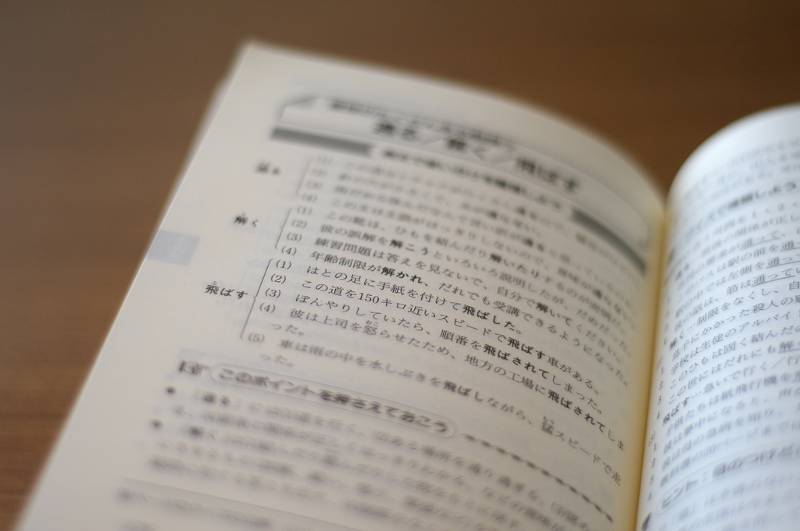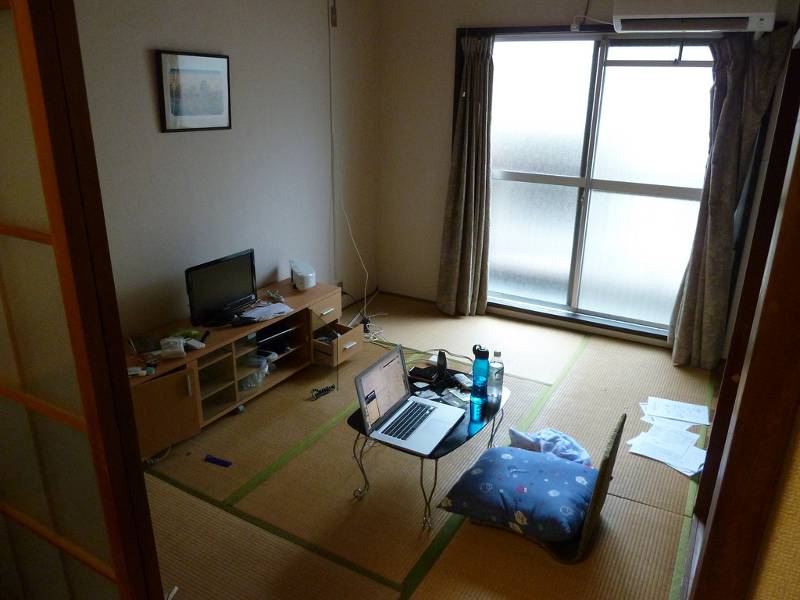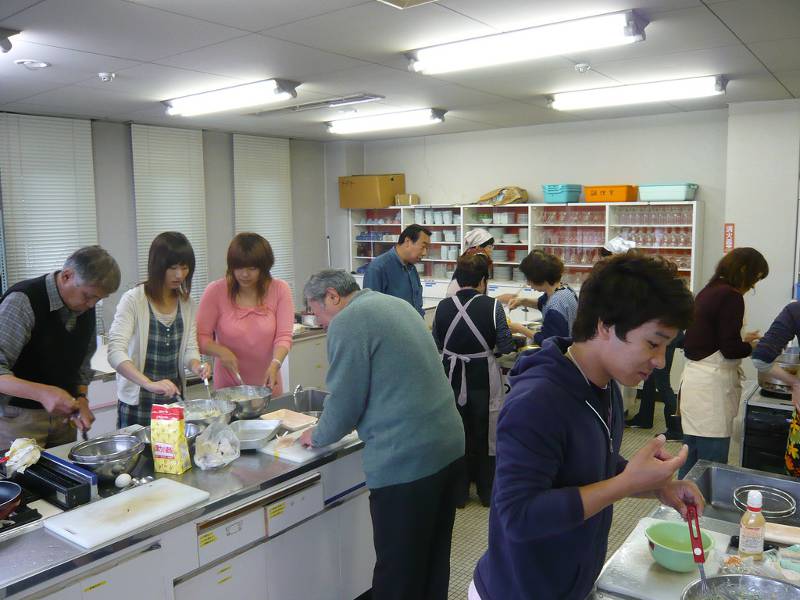When you first arrive in Japan, it feels as if you’ve got all the time in the world to study. But 1-5 years can fly by fast (especially the 1). Unless you’re planning to live in Japan long term, there will eventually come a time when the total immersion of Japan is not available to you.
You may not see yourself using Japanese after JET. But every bit you learn will make your life easier in Japan. Also a second language increases your marketability, no matter what job you apply for.
Whether you come to JET with a degree in Japanese or next to zero experience, you have a prime opportunity to maximize your learning and take your language ability to new heights.
Read on for good habits, better ideas, and best practices for getting the most out of your Japanese language learning on JET.
The Bare Minimum (What You Should Do Before You Arrive)

For those coming to Japan with zero Japanese ability (like I did), learn kana as quickly as possible. If you don’t have time to learn it before you go, you have a 12+ hour flight ahead of you in which there’s nothing to do but sit.
Use a few hours of this time to cram kana into your short term memory. As soon as you land, you’ll be surrounded by opportunities for your brain to recall what you’ve learned.
For easy and efficient kana guides that help you remember with pictures and mnemonics, click the links below:
If you’ve still got time/energy, go over the first 3 chapters of Japanese for JETs (more on that below), or a better textbook. The more you can understand about basic sentence structure before you land, the better. That way, you can start putting together the handy vocab you learn and use it to communicate right away. If this isn’t possible, cram some survival phrases to hold you over for a few days until you get enough down time to study basic grammar.
The point is to hit the ground reading and speaking, be it ever so rudimentary. The sooner you start using Japanese, the faster you will learn and the better off you’ll be.
Get Your Study Materials Together

Before you can study, you’ll need study materials. Though you may have some already, CLAIR provides two sources for learning Japanese:
- The Japanese for JETs textbook
- The JET Programme Japanese Language Course
The Japanese for JETs textbook is CLAIR’s effort to offer some kind of beginning language study materials to JETs that may arrive in Japan with nothing. It comes with a CD and pages full of words. I found the first few chapters useful when I was starting out, but switched to better learning materials as soon as I learned kana.
The general consensus about this book is that it’s good if you’ve got nothing else. But considering the wealth of info online and the fact the book is filled with romaji, it’s best to pass on it and find something better.
CLAIR also offers the JET Programme Japanese Language Course. As recently as a few years ago this was still administered by mail, but it has since been moved online. It consists of a beginner and intermediate course, which you can choose between freely without testing. There is also a Translation and Interpretation Course which you have to test into.
If you want to sign up for this course, tell your supervisor in October when they give you the JET Participant Contact Information Confirmation/Language Course Survey Sheet.
The course consists of lessons and four or more tests a month. If you miss the test submission deadline three times, you are removed from the course.
On the plus side, the deadlines are good way to keep yourself on track. Aside from that I don’t know many other positives. I never signed up for the course myself and most people I knew who did switched to better study tools rather quickly. This old review from 2010 seems to like the course, especially the grammar explanations. But I would imagine the course has changed a lot since then (hopefully for the better).
When it comes to the negatives, Tofugu writer Verity gives us her experience:
“I completed the beginner’s course, but gave up on the intermediate. The beginner’s course is in romaji, which is really its biggest fault. The grammar explanations are not clear. I almost always had to look them up elsewhere before I could get them. They were less explanations than examples. Also, showing the books to Japanese co-workers often made them confused too. The multiple choice tests (that used to be scantrons that you posted in, but are now done online) often have more than one answer that could be right, but it’s just a case of picking the more right one. Even my co-workers couldn’t work it out sometimes. There isn’t much content in the books either in terms of vocab or useful expressions. I had a friend who took the Advanced course and she was very frustrated that even the advanced course had furigana. It wasn’t advanced at all. Basically, they are written like Japanese English textbooks, about as interesting and useful, ie. not very. They are incredibly patronising. The only good thing I heard was that it gave people study deadlines, but people didn’t actually use the books to study for the monthly tests.”
It’s really up to you whether or not to take the course. It’s absolutely free, so you might as well sign up and try the first lesson and judge for yourself.
If you find Japanese for JETs and the JPJLC lacking, head on over to our page of recommended Japanese learning resources. Pick out a few textbooks, websites, and apps you can use to build an effective study regimen.
A word of advice: no matter what your study regimen looks like, make sure it includes kanji. You’re likely to learn get a lot of grammar, speaking, and listening practice because you’ll be surrounded by it. But kanji won’t come automatically. This is where a program like WaniKani could do you a lot of good. Not only is it an easy way to have kanji learning fed to you with a silver spoon, your Japanese life will ensure you have plenty of opportunities to spot kanji in the wild, further solidifying what you’ve learned.
Do a Little Sit down Study Every Day (Don’t Worry, You Can Start Small)

Once you’ve gotten your study materials, you need to set aside study time. Even though you’re surrounded by Japanese, you may not be immersed. The ALT job (pretty much) requires you to use English 8 hours a day, after which time you may usually be so tired that you don’t go out. Even if you do immerse yourself, immersion doesn’t equal learning. You still need to have sit down and study every day. It’s the only way you’ll learn new material that you can try out in real life situations.
Learn by Doing

Nothing gets vocabulary or grammar stuck in your head like using it. Why else would textbooks be filled with exercises? But better than textbook exercises is practical application. As former JET and Tofugu writer Verity advises:
“Get involved in teacher’s activities, not just school clubs. Learning through doing is a very powerful tool. For example, I helped the teachers clean the gym and set out chairs before ceremonies. The teachers I was working with explained things in Japanese. I helped through a combination of listening and watching others. Doing the activity you just learned the words for cements it far more than just looking at it on paper. Also, helping with such tasks will improve your relationship with other teachers, so they may be more willing to communicate with you at other times.”
Practicing Japanese at Work

Because your job title is English teacher, it is possible to stay in English mode during work hours, even though you're at a Japanese workplace. You may block out Japanese inputs during work time because switching your brain between English and Japanese is tiring. Then you may do the same after work. Over time this adds up and you can go months or years without learning as much Japanese as you had planned.
There will be times when you can use Japanese at work. But with your JTEs (Japanese Teachers of English) and students, it's English a-go-go. And you'll spend 90% of your time with these two groups.
With so much time spent on English, how can you maximize your own Japanese learning opportunities?
Don't fret. We've put together some advice for practicing Japanese at work (when you should mostly be using English) and practicing Japanese after work in the community.
Reverse engineer English classes
This was an idea I had halfway through my JET experience. A few JTEs I worked used me for only 30% of the class, leaving me to stand at the back of the room awkwardly the rest of the time. After getting tired of pretending I was busy, I started bringing a pocket notebook to each class and reverse engineering the English being taught to the students. Having the English grammar on the board gave me a focal point. With the English in mind, I listened to the explanation in Japanese and learned the Japanese grammar equivalent.
Because I was a beginner at the time, every lesson was something I could learn from. But that doesn't mean high level learners can't benefit from class time down time. Our own Verity Lane used this time in her own way:
"When a teacher is speaking in Japanese in class, really listen. Don't switch off. Learning to understand classroom Japanese can be really helpful. However, I would encourage particularly SHS JETs not to use Japanese in class. When you are in class you're there to teach first, anything you learn comes second at that moment. It's a time for listening practice, not speaking practice."
Talk to students in Japanese during breaks
Though you should use English the majority of the time while at work, English is not beneficial to every situation. You may encounter students who are hesitant to speak English or are downright belligerent about learning in general. This is where your struggle with Japanese can help them. While the "yanki" students may take more time to warm up, those that are nervous about English can learn from your example. Tofugu writer Rich explains:
"Though I spoke English with students in class, outside of the classroom I'd often practice Japanese with my students – during lunch break, at after school clubs or if I ran into them outside of school. Not only did my Japanese improve, but students recognized my struggle with Japanese and became bolder in their use of English. Students learned more about me and my culture than they would have if I had built an 'English only barrier.' So in the end we both benefitted."
Turn your lesson materials into study materials
If you're making lesson plans for your students, reverse the English you're teaching them into lessons for yourself.
For example, let's say you're a beginner at Japanese and teaching at an elementary school. Turn your lesson about animals into a self-study vocab lesson. If you're an intermediate learner teaching senior high, take English sentences you're writing for your students and translate them into Japanese.
Depending on your level and situation, you may get a lot or a little from this method. Even if you only learn a few new words, it's worth the effort. You'll be doing this work anyway. You might as well squeeze a little bit of learning out of it.
Use your desk time at work
If you're having trouble blocking out study time at home, you may have all the time you need at work. ALTs and Japanese teachers are not assigned to a class for every period of the day. This is because Japanese teachers need time to prepare lesson plans, attend meetings, and chip away at other work duties. As an ALT, however, you don't have quite as much to prepare. More than likely, you'll be able to finish preparing for classes with time to spare.
Most JETs bemoan this part of the job (as I did), wishing there was more work to do or some other way to be useful. Certainly you can find ways to use this time that help your students, but most supervisors are 100% okay with you using this time to study Japanese. If you get your sit-down study time done at work, then the after work study time you have blocked out can be used for going out and using Japanese for even more gains.
Stay after school and chill with the teachers
If work is getting you down and you're missing chances to connect with staff at your school, stay in the office after the students leave. Though you're probably allowed to go home at 4:00p or 5:00p, stay after every once in a while, especially if you don't have anything extra to do. After work hours, the teachers let down their hair and break out the snacks. The teachers' room becomes a lot more lively and a little less stuffy. You'll build all-important work bonds and get some Japanese practice. Increase your vocabulary and camaraderie at the same time.
Practicing Japanese in the Community

After school is the perfect chance to get out and use your Japanese. No job titles restricting you to English now! Of course, real life rarely goes as planned. Your energy after work is bound to be sapped. It will be incredibly easy to arrive home, collapse and stay there. Don't get me wrong. Collapsing and relaxing in a Japanese-free zone is necessary. But just like going to the gym, there are times when you have to force yourself. Here are a few things you can do to practice Japanese in the community.
Put yourself in new situations and keep a notebook on you
Chances are, you'll get good at some survival Japanese right away because you'll be put in situations where you have to communicate. But life is full of situations, with caveats, exceptions, and branching consequences. So drill some vocabulary and then get into situations where you think you'll be likely to use it. Then get into them again. Each time you'll get better at using the grammar and vocab you learned, as well as getting fuel for future study.
This future study fuel can be most easily remembered with a handy pocket notebook. This is something I did out of necessity and it ended up being one of my best teachers. When trying to communicate in a new situation, if you hit a wall, take note. This reveals gaps in your knowledge, which you should write down and add to you study regimen. Not only will you boost your ability level, but you'll practically smooth out bumps in the road of your Japanese life.
Our own Verity shares her experiences in this area:
"Try to do things by yourself. It can be tempting to have a supervisor or a friend do everything for you. That's fine at the start, especially for things like setting up a bank account, but don't let it become a habit. If you don't try it for yourself, you'll never get better. Nothing bad will happen if you say something weird at the postoffice or the garage or the combini. And sometimes you can get a much better deal by doing things yourself. For example, I asked my supervisor for advice about getting my winter tires changed. His way cost me 8000yen. The next season I went to a garage myself and through a combination of Japanese and gestures, I got my tyres changed for 2000yen. Not only that, but I knew I could do it myself."
Putting yourself out there
It's great to get in casual chit chat with coworkers and students, but sometimes you need a lengthy, focused conversation to cement language concepts and force you to listen and talk longer. This is your "language power lifting" in comparison to usual "language aerobics."
But how to do this?
Chances are, your town has community groups that offer conversation meet-ups or some kind of language exchange. Ask your supervisor if they know of any opportunities.
Look for volunteer activities. Part of your job is to serve your town anyway, so might as well get some language practice and connect with Japanese people while doing so. The great part about volunteer work is that it's a nice break from routine of teaching and you'll have more opportunities to use Japanese than you will at school.
Every prefecture has an AJET (Association for JET) group that organizes activities for JETs. Though you may only see other JETs, one of your fellow ALTs might bring a Japanese friend or coworker along. Or the event may involve interacting with Japanese people. At the very least they're fun and stress relieving. At best you'll get some Japanese practice in as well.
Join a club or group outside school, like taiko or ikebana. Even if you feel like you won't like it, sign up anyway. Japan is a group-oriented society. So just being part of a group, whether you excel at the particular skill or not, will make you much more likely to become friends with the people in the group.
Another side effect of all this Japanese friend making is that it wards off culture shock and makes you less likely to join the "foreigners only club." I spent some time in this club, mostly due to culture shock, and during that time my Japanese stayed right where it was. It's a good idea to hang out with your fellow ALTs and forge those lasting friendships, but make sure you don't exclude yourself from interactions with Japanese people. Your advancement in the Japanese language will suffer as will your ability to cope with cultural adjustments.
JET Program Japanese Study Success = Failure

I’ll end with some great advice I got from my Prefectural Advisor soon after I arrived in Japan. “Language is about communication, not perfection. If you’re using hand gestures and messed up grammar, but eventually get your point across, you’ve succeeded.”
I, knowing almost zero Japanese at that time, was terrified to speak, especially surrounded by other JETs who had studied Japanese as their undergrad major. But his advice released that anxiety and allowed me to fail. And fail I did. A lot.
“Failing your way to success” has become a popular idea in recent years and for good reason. That’s how learning works.
If you’re on JET, study every day. Then go out and fail. You’re in the best place you’ll ever be to do it.
The best news is that practicing your Japanese in Japan is a virtuous cycle. When you study Japanese, you're learning to communicate better. When you communicate, your Japanese gets better. All this raises you up and makes your life in Japan easier overall. Here's to your continued learning and ever-improving life in Japan.
Get More JET Program Advice
This is only one article in our larger Tofugu JET Program Guide. It’s your experienced JET friend with the best knowledge and advice. Get help applying to JET, passing the interview, teaching, speeching, and more. The guide covers the JET experience from start to finish. It’s written by JET alumni and constantly updated.
Whether you’re applying for JET or already there, your new sempai will help you out.
